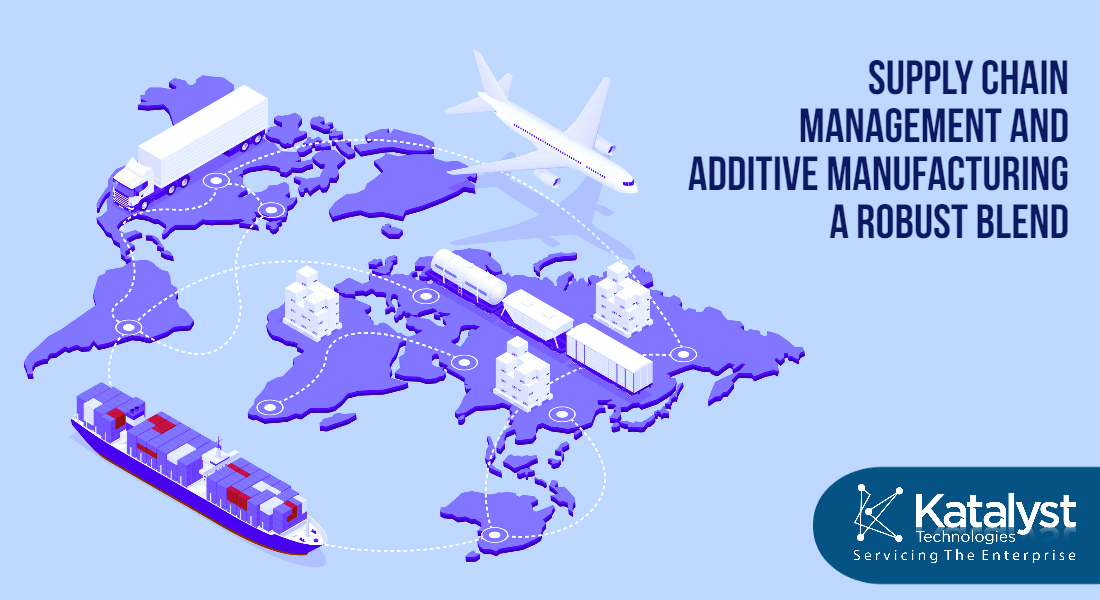Mainframe Technologies to Dominate Ecommerce Market with Latest Solutions
For a long people have been anticipating the end of mainframes; however, it continues to lead the technological solutions, and it appears that its days are far from over. Undaunted by the new workhorses of the enterprises and acceleration in the cloud, technology is still thriving in the market. But before we further discuss about mainframe's future in the IT sector, we should first attempt to understand what is it, its history, and then move on to its market segmentation and its future in the market.
Basic Concept of Mainframe
Since its introduction in the 1950s, mainframes are high-performing computers consisting of large memory and processing power that allows the calculation of billions of problems in real-time. It is higher performing system than PCs, workstations, and minicomputers in many ways. They run in the background of immense and critical data processing tasks. It is a technology where requests received are processed faster and shared with related processor cards. It is majorly used in IT companies, Walmart, NASA, and a lot of other sectors that require huge data to be processed. Therefore, it wouldn't be an exaggeration to say that it will be used more in the coming days.
History of Mainframe
The tech giant IBM introduced large-scale computers in the 1950s with the 700 series of machines. After much research and development, CBOL, Fortran, PL1, and C were added as programming languages, and system 360 enabled time-sharing and multiple virtual storages. In the 1970s, the new ESA version was extended to 31 bits, and parallel sysplex and data sharing were introduced, resulting in better load balancing and 24X7 availability and failover. Moreover, at the beginning of the 2000s, Java, Linux, and s64-bit were invented, and post 2010 saw the emergence of APIs and REST services. During the same time, hardware was enhanced to support to support Java and C++ workloads. Many leading companies in the IT sector, such as IBM, BMC, and CA, continued their investment in the mainframes along with cloud-based products and Zowe.
Market Segmentation of Mainstream
Since its inception in the mid 20th century, mainframes have come a long way. These days, they have become an integral part of modern enterprises across the globe; nonetheless, many believed it to face some intense competition from the modern ERP solutions, AWS, and other cloud-based solutions. However, given its usability, which makes it more cost-effective, it will continue to gain more trust among companies. These latest technologies offer the most reliable, cheapest available system to businesses that have high workloads. Additionally, mainframes run at approximately 100 per cent CPU efficiency compared to Intel-based servers that require below 60 per cent utilization. This fact infers that though the cost of mainframes may be high, they offer a great return on investment. Consequently, many industries and enterprises, whether SMEs or big, view their future with mainframes. Let us look at the various market segments and trends that determine how businesses opt for mainframes.
According to a Gartner study, there are four segments based on the processing size (MIPS) used.
< 5000 MIPS - Small users - 300 to 400 customers
5000 – 20000 MIPS - Medium users - 1,100 to 1,700 customers
20000 – 75000 MIPS - Large users - 1,800 to 2,500 customers
< 75000 MIPS - XL users - 250 to 300 customers
These numbers indicate that adaptability among various businesses houses follows a specific pattern, such as SMEs, large, and XL customers are growing at 5 per cent, 15 per cent, and 20 per cent rate respectively. The fixed pattern that this data reveals is that most small companies are opting to move to a shared data centre over rehosting or migrating out of the mainframes. Likewise, the mid-sized companies are strategically choosing to stay on the mainframe because, for them, moving out will result in taking a risky path of rewriting all the programmes. This may or may not offer them expected or low returns. Therefore, they are more interested in investing their time in MIPS and other cost optimization and continue to modernize their business while reducing their yearly license cost. It also entails moving non-core applications out of the mainframe and further migration to the cloud. Large-scale companies are more willing to invest in the mainframe technologies as they want to extend their business operations by expanding their core applications, consolidating application space, and improving their processes. Automation software, including DevOps, enable them to explore other cloud-based options to grow their businesses. The bigshots always have a definite plan for their mainframe and its workload, and therefore, they consider it to be at the core of their technology roadmap and business landscape.
It is true that business leaders can't expect an immediate return on their investment once they have put their money on mainframes. They have to adopt a long-term strategy that will enable them to optimize, consolidate, modernize, and trim their workloads. This will help them enhance accessibility and boost their business value at the core of their applications. Moreover, IBM is doing its bit of research and development to implement the latest advances, such as open-source integration, native API support, and analytics. These solutions will help companies to reduce costs and upgrade performances. Additionally, the Garner study reveals that the overall mainframes installed will grow from 6 per cent to 8 per cent annually in the next five years. The industries capitalizing most on this trend will be the financial, public, and manufacturing sectors in comparison to other verticals.
Future of Mainframe
The current indicate that majority of enterprises and industries are adopting cloud-based technology. And with the outbreak of the pandemic, the need to move to the cloud was further accelerated. It is anticipated that worldwide end-user spending on public cloud service is all set to increase at 18.4 per cent to a total of $304.9 billion in 2021. Cloud-based platforms, including AWS, Microsoft Azure, and others, have gained huge traction from businesses. However, mainframes remain an integral part of various core business operations across the globe. As per the report by Datatrain, the mainframe is responsible for handling almost three-quarters of the global Fortune 500. A study conducted by Forrester reports that enterprises have said that 72 per cent of their customer-facing applications were based on the mainframes. Though undeniably the mainframe is facing a strong challenge from its contemporaries, the innovative approach adopted by IBM and others will ensure the mainframe continues to flourish in the market.
Let us look at the ways leading IT software companies will ensure a safe future for mainframe;
· Teaching COBOL to the Coming Generation
Last year, IBM Systems organized "Preparing Enterprise IT for the Next 50 Years of Mainframe", an event that focused and discussed strategies to strengthen the future of mainframes amid a critical skills shortage. From the discussion came out a suggestion that the IT giant must focus on preparing young professionals who can handle the mainframe codes. Therefore, IBM has joined forces with Linux Foundation's Open Mainframe Project with an aim to ignite interest among the young coders for COBOL. The partnership will ensure the commencement of projects that include open-source COBOL training from freshers to experienced professionals.
Furthermore, the developers can come together and connect with other programmers and coders and learn from their skills. The IBM Z Academic Initiative has joined hands with more than 120 schools around the US designed to boost interest in COBOL. And interestingly, more than 45 of the partnered schools offer dedicated COBOL programming, thus already offering a background to the students learning COBOL. Also, as more people will be inclined to learn about the language, efforts are made to make it more modern. Thus, with better performance, COBOL will also become more reusable for coding and other innovation.
· Removing Pressure on Developers
In the event organized by IBM, it was also discussed that companies are failing to migrate from and into the mainframe effectively. The IT giant solution needs to realize that many businesses incorporate mainframe because they don't have enough money to migrate from the system or have already put the heavy amount in the process, and their developers have to comply with it. In fact, a recent survey report by Vanson Bourne states that virtually 95 per cent of respondents think their IT teams are under pressure to adopt modern technologies on the mainframe to accelerate delivery and innovation. And to attain this target, about 52 per cent of the team members have installed DevOps to the mainframe. Therefore, to rectify this mistake, IT companies must invest in the Agile methodologies in comparison to the waterfall approach so that the developers can offer incremental improvements and remove unnecessary pressure on them.
· Keeping Mainframe Alive
For many decades, people have been forecasting about the end of the mainframe; however, it will continue to expand its operations as long as its size continues to get smaller. The general perception of the mainframe is that of an old gigantic computer; nonetheless, with advancing technology, companies have successfully reduced its size and made it more comfortable to use. Besides, its ability to processes huge data in real-time is the key factor behind its survival in the market. Compared to cloud and commodity servers, the mainframe has always been ahead in the race as they have limited data processing capability.
Moreover, the biggest strength of the mainframe is that it supports multiple operating systems, in the likes of z/OS and Linux. It is due to this feature it can hold various workloads, and in the coming days, we shall see that it will be able to handle even more diverse operating systems. Therefore, more operating systems, such as Linux and Microsoft, may deliver mainframe support and compete with one another intensively in the market over mainframe. Also, continuous innovations like Docker have revamped the way businesses would develop and deploy software. And the biggest contributor to this fad has been the mainframe.
· Offering Easier integration
The mainframe industry has been making great strides in incorporating mainframes with other infrastructure, and if it can successfully integrate COBOL with other languages, it will be an added benefit.
Wrapping Up-
In short, the mainframe industry is here to stay, and the facts and figures mentioned in the above paragraphs imply that it will thrive in the coming days as more processing powers are added. Many leading IT companies are investing their time and money to enhance the platform with innovative technologies. Although the current state of the mainframe may not be suitable for all industries, little more effort for understanding customers' needs and offering a tailored approach will enable businesses to strive higher in the market. The mainframe services by Katalyst Technologies will enable businesses to live up to their full potential and boost their sales. Our experts offer a technical roadmap that would fit well with your business goals and empower you to deliver the best of your services to your client.



